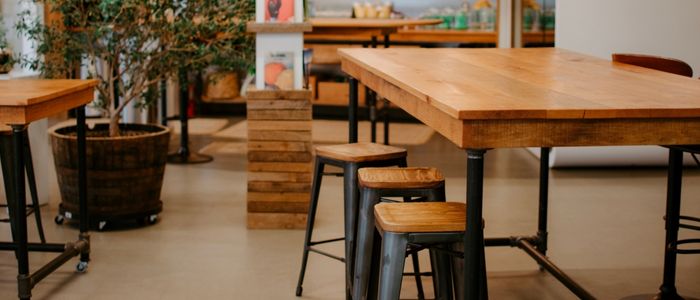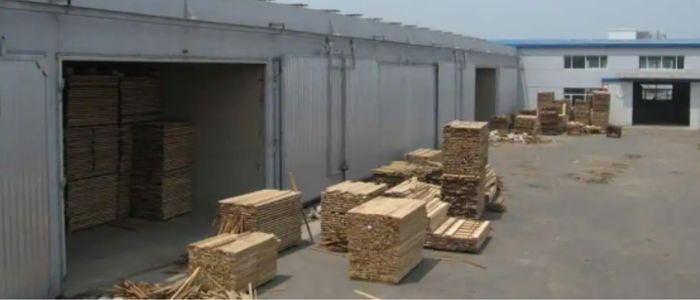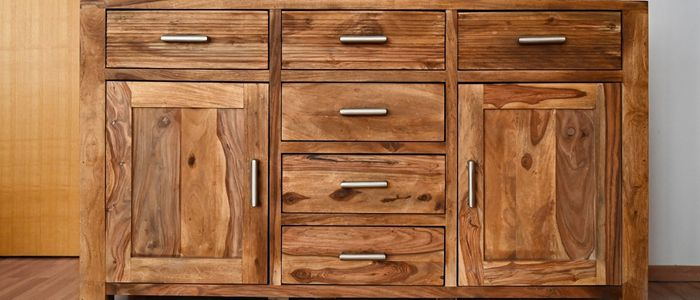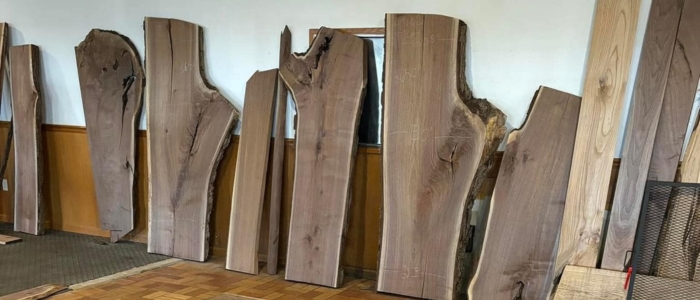With the popularity of vintage styles, many people are more inclined to buy solid wood furniture, what solid wood furniture uses is natural wood material, natural wood is not harmful to human and its environmental performance is relatively high and more practical than other materials.

At the meantime, The texture of the wood retains natural and raw beauty, different woods have different textures and colors, this feature makes more and more people begin to choose natural wood as their raw material, and this also provide a platform for those talent woodworkers to show their craft.

In addition, Solid wood furniture is strong and durable. The life of ordinary plywood furniture is 3.4 years, while the life of solid wood furniture is at least 6 times longer than that of plywood furniture. A solid wood furniture with good material and excellent workmanship will also have a high collection value. Therefore, solid wood furniture occupies an important position in the furniture market.
A set of exquisite solid wood furniture not only needs the carpentry master’s superb wood art, but also needs good wood resources to do the support, the two complement each other, is indispensable. And the essential condition of good wood is: wonderful texture, Just the right of moisture content, no insect pests and no loopholes. All this requires steady wood drying.

Wood drying is an important factor to guarantee and improve wood and lumber quality, reduce wood consumption and increase wood utilization rate.
Wood drying is one of the most energy-consuming processes and the most technical processes in furniture production, which occupies an important position.we can say, the stand or fall of wood drying technology is deciding the length of furniture life.

what is wood drying
Wood is a loose material that has porous structure and the pores in the wood can absorb and release water, so untreated wood is extremely unstable in material and performance. In addition the wood has features that expands when it’s wet and shrinks when it’s dry, therefore, wood and its products are difficult to shape under natural conditions.

In order to ensure the quality of lumber and wood products and prolong the their use life, It is necessary to take appropriate measures to reduce the moisture content of wood to a certain extent. So wood drying refers to a process of reducing the internal moisture content of wood to a standard parameter adapted to the environment by using the difference between the steam pressure inside and outside the wood during heating . In other words, it refers to the process of removing wood water by evaporation or boiling under the action of heat energy.
Why do we need to dry wood?
- Prevent cracking and twisting
When the wood is dried to a suitable degree for the environment or meet the requirements of using , the structure of the wood tends to be stable,The wood will not crack or distort due to water loss,In this state, the wood will last longer and be stronger.

- Improve mechanical strength and physical properties.
The physical and mechanical strength of wood will increase because of the decrease of moisture content when the MC of wood drops below the fiber saturation point by wood drying. At the meanwhile, it can improve the physical property of wood, makes wood easy to glue and decorate, and wood texture and color more obvious. In addition, the dried wood is easier to sawing and planing, reducing the loss of woodworking machinery.
- Prevent mildew, decay and moth
When the moisture content of wood exceeds 20%, it is easy to produce mildew, which will cause decay and moth in the wood. If the the moisture content of wood can reduce to less than 20%, it will destroys the growth conditions of bacteria and insects, enhances the ability of wood to resist mildew, decay and moth, and maintains the inherent characteristics of wood.
- Reduce wood weight and transport costs
After drying wood, its weight can be reduced by 30 to 40 percent, The transport capacity of wood and lumber producers can be greatly improved if wood and lumber producing and drying are concentrated in the supply area. At the same time, it can also prevent the wood from mildew and decay during transportation to ensure the quality of wood.

- Upgrade wood and furniture products
After drying treatment of wood or furniture, its parts size and product structure are stable, and product quality is guaranteed, with high grade.
The method of wood drying
- Conventional steam drying
Conventional steam drying refers to the conventional method of drying with steam as a heat medium, through indoor convection heat transfer to heat wood so that the water in the wood can absorb heat and evaporate, being expelled from the house, and draws in cold air.

Advantages: 1. Easy to create kiln, 2. Suitable for large-scale drying, 3. Use steam, hot water, furnace gas, or hot oil as heat sources, cheap and simple.
Disadvantage: 1. Long drying cycle. 2. Open system, the heat loss is large and is not conducive to heat recovery. 3. The heating method is not environmentally friendly. 4. Cannot guarantee the quality of wood drying. 5. It is easy to have uneven drying inside and outside the wood
- Microwave (high frequency) drying
Microwave (high frequency) drying means putting wet wood exposed to microwave alternating electromagnetic fields, and under the action of frequently alternating electromagnetic fields, polarized molecules in the wood rapidly rotate, rub against each other, and generate heat, thus heating and drying the wood.

Advantage: quick drying circle, Dried wood is of good quality, dried evenly inside and outside. No pollution, friendly to the environment.
Disadvantage: Large investment in the early stage of kiln construction, consumes a lot of electricity.
- Dehumidification drying
Dehumidification drying refers to a method of heat exchange flow drying at low temperature and low wind speed by condensing and dehumidifying a part of the air medium in the kiln with the cold air end of a special dehumidifier (heat pump), and then mixing it with the rest of the circulating air in the kiln after being heated by the hot end of the dehumidifier and the auxiliary heater.
Advantage: This method has no pollution, low drying temperature and good drying quality.
Disadvantage: high electricity consumption, relatively long drying time.
- Vacuum drying
Vacuum drying means drying wood in a closed container under negative pressure (vacuum) conditions, Evaporating the water in the wood at a lower temperature, which accelerates the drying speed and ensures the drying quality.
Advantages: Fast speed, short drying circle, high drying quality, environmental protection.
Disadvantage: Large upfront investment.
- Solar drying
Solar drying refers to the use of a collector to absorb solar radiation energy to heat the air, and then through the air convection and transfer heat to dry wood.
Advantage: energy conservation and environment protection, Small initial investment.

Disadvantage: Susceptible to the weather, The drying quality of wood is uneven. Long drying cycle.
Wood drying principle
- Ensure the quality of wood drying.
- Consume less energy (save energy, reduce costs)
- Control the temperature, humidity and air velocity of the dry medium.
- Increase drying rate.
Summary
The above are the wood drying technologies that appears more times on the market at present. For wood suppliers that need rough machining and mass production, Conventional steam drying technology is the first choice, which can meet the large-scale production.
For the small scale and limited productivity of wood suppliers and wood art enthusiasts, solar drying technology, dehumidification drying technology are the best choice, the cost is cheap, the quality of drying is relatively good

For furniture manufacturers who have high requirements on wood quality and attach importance to the use and collection value of wood, vacuum drying technology and microwave (high-frequency) drying technology are the first choice, Wood dried by these techniques has a short drying time, good drying quality, and no eggs or wormholes.
In addition to single technical drying, there are also combined drying technologies on the market, For example, conventional steam drying technology + dehumidification drying technology, solar drying technology + dehumidification drying technology, vacuum drying technology + high-frequency drying technology and so on. These techniques are gradually accepted and used by sawmills and storage mills under the continuous practice of technical personnel.

Nowadays, more and more wood art lovers begin to devote themselves to the creation of log furniture and wood art. We need to improve the drying quality and utilization of our wood.



